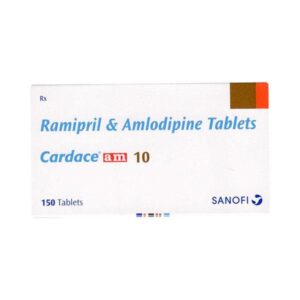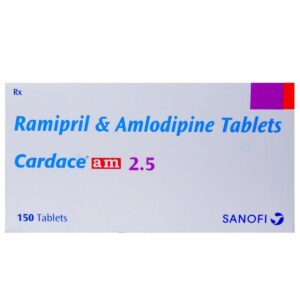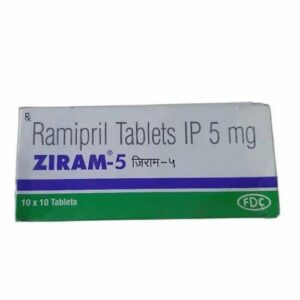AMLODIPINE + RAMIPRIL
Amlodipine: Amlodipine is a medication primarily used for the treatment of hypertension (high blood pressure) and angina (chest pain). It belongs to a class of drugs known as calcium channel blockers.
The mechanism of action of amlodipine involves its ability to block calcium influx into vascular smooth muscle cells and cardiac muscle cells. By doing so, it relaxes and widens the blood vessels, which leads to a reduction in blood pressure and an increase in blood flow to the heart muscle, thereby relieving symptoms of angina.
The usual oral dose of amlodipine for hypertension is 5-10 mg once daily. For the treatment of angina, the recommended dose is 5-10 mg once daily. The dosage may vary depending on individual patient factors, such as age, other medical conditions, and how well the individual responds to the medication.
Common side effects of amlodipine may include peripheral edema (swelling of the lower limbs), dizziness, headache, flushing, and fatigue. These side effects are usually mild and transient. Rare but serious side effects may include allergic reactions, severe dizziness, irregular heartbeat, and worsening chest pain. It is important to seek medical attention if any severe or persistent side effects occur.
Amlodipine is usually well-tolerated and effective in managing hypertension and angina. However, it is essential to consult with a healthcare professional before starting or changing any medications to ensure it is the appropriate choice for an individual’s specific health needs.
Ramipril: Ramipril is a medication commonly prescribed to treat high blood pressure (hypertension) and heart failure. It belongs to a class of drugs called ACE inhibitors (angiotensin-converting enzyme inhibitors).
The primary mechanism of action of Ramipril is to inhibit the enzyme ACE, which is responsible for converting angiotensin I to angiotensin II. By blocking this conversion, Ramipril helps to relax and widen blood vessels, reducing the strain on the heart and improving blood flow. This ultimately leads to a decrease in blood pressure.
The recommended starting dose of Ramipril for hypertension is usually 2.5 to 5 mg once daily. The dose may be increased gradually, depending on the individual’s response, up to a maximum dose of 20 mg per day. For heart failure, the starting dose is usually 2.5 mg per day, gradually increasing to a target dose of 10 mg once daily.
Like any medication, Ramipril can cause side effects. Common side effects may include dizziness, headache, fatigue, cough, and gastrointestinal symptoms like nausea or vomiting. Some individuals may experience a dry cough, which is a known side effect of ACE inhibitors. Rare but serious side effects can include angioedema (swelling of the face, lips, throat, or tongue), liver problems, and low blood pressure. It is important to speak with a healthcare provider if any side effects occur or if there are concerns about the medication.




